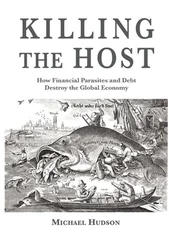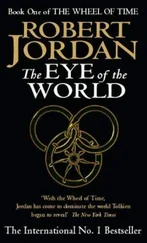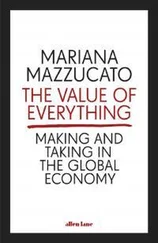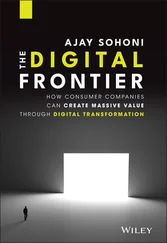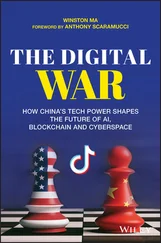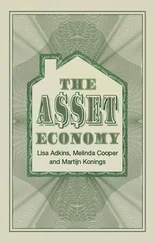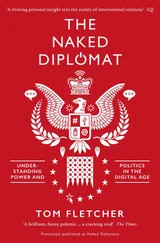The third case study examines disintermediation, looking primarily at Uber, Airbnb and blockchain technologies. Here the economic practice involves a digital platform intervening into an existing service in a society (taxis for example) by disintermediating existing service providers and the various regulatory requirements imposed on them. Monetisation then occurs as the platform sits between the service user who pays and the service provider who is paid, allowing the platform to dip into that monetary flow.
The fourth case study looks at not-for-profit digital economic practices, including free software, the World Wide Web Consortium and Wikipedia. These offer a contrast to the previous case studies in demonstrating that, while digital economic practices create a kind of value which is realised by the collective activities of users, this value can exist separately from its monetisation for profit. Digital economic practices that refuse monetisation produce different conceptions of information as property, in particular how information may be treated as a property that is distributed freely by right, instead of one that is privately and exclusively owned.
The final case study is of online, computerised and networked gaming. Here the economic practice of renting and not buying a commodity is examined more closely, having been mentioned briefly in prior case studies. This practice is one in which what appears to have been bought by a consumer is in fact rented to them and may be withdrawn by the digital company that has been paid. It is also closely related to subscriptions for access to digital platforms. Moreover, the study of gaming allows different digital economic practices to be seen operating together, particularly in the rise of ‘free to play’ models of monetisation, and in the intersection of digital with non-digital economic practices – after all, many games are bought in much the same way as a book is bought online. Massive multiplayer online games, including World of Warcraft , are examined here, as are a range of other games, in particular mobile games like Candy Crush and ‘battle royale’ games like Fortnite and PlayerUnknown’s Battleground .
While these case studies do not comprehensively map digital economic companies – neither Amazon nor Spotify, for example, are addressed in detail – they do qualitatively examine a multiplicity of digital economic practices, both successful and unsuccessful. This case study work will then be developed with concepts drawn from key debates in existing digital economy theory. The three debates examined are free labour, information surpluses as exploitation, and the breakdown of the producer/consumer divide. All three have substantial existing literatures, but Chapter 7will show that, in the face of case study evidence and conceptual analysis, all three have significant failings needing further theorisation. Such a plan, it should be noted, means that there will be a significant shift in tone as the argument moves into theoretical debates. Whereas the case study chapters engage with the daily matters of digital economic practices, attempting to both follow and excavate how such practices are formed from different actions and perspectives among users, platform owners, platform workers and so on, examining existing theories of these practices involves conceptualisation. Issues such as the information drawn from freely given activities that users provide to social media, that in turn underpin revenue through advertising, will be repeatedly mentioned within the complexity and materiality of practices, and it requires a shift of emphasis to start drawing out such issues by exploring conceptualisations of them. Practices always involve ideas about what is happening within them, and ideas always refer to (even if obliquely) and rely on a sense of relevant practices; in this sense the shift is one of emphasis from primarily diagnosing the meaning of economic actions in digital contexts to theorising across such contexts how recurrent actions are structured and may be conceived.
This move to conceptualisation will provide the basis for a model of digital economic practices to be proposed through three linked divisions – value, property and profit – to be set out in Chapter 8. The first two divisions address the creation of a value that is realised by collective activities, such as search or gaming, linked to different forms of information property. Once a digital platform instantiates such a connection, it becomes possible for the third division of profit to be added through a monetisation strategy. Three main monetisation strategies are identified: targeted advertising, disintermediation and reintermediation, and rent not buy. Within this model, the possibility always remains that a digital economic practice may refuse to seek monetisation for profit and instead offer information as a distributed property. In the latter case, radical options open up for digital economic practices that offer information able to be used simultaneously and completely by everyone who can access it.
Following this modelling of the digital economy, Chapter 9will consider broad policy questions. The first key issue is to establish where a digital economic practice exists: what is the jurisdiction appropriate to any digital economic company? The argument is made that location can be defined by using the activities of platform users as these are located in places, instead of the information flows resulting from these activities as these are transferable across boundaries. Following this, policy issues around tax are examined, particularly in relation to taxes that derive from the places in which digital economic activities occur. The discussion also includes an examination of the possibility of micro-taxation. Third, the chapter addresses labour issues, particularly those arising in relation to platforms that monetise users freely given time in activities on a platform and to disintermediation monetisation strategies that avoid regulation (particularly regulation of the service providers associated with each platform). Finally, the more radical possibilities offered by information as a distributed property are explored in the context of debates over the information commons.
The final arguments of the book address how the evidence of the case studies and the model of the digital economy fit into wider discussions of the nature of twenty-first-century global economies. Digital economic practices depend on the collective activities and communities of users, and have managed to insert profit-making into the most intimate spaces of everyday life through these collective moments. The challenge and urgency of digital economic practices is to address this takeover, for profit, of socially essential and intimate activities, such as searching for information or making friends.
1 The Financial Times methodology can be found at www.ft.com/content/1fda5794–169f-11e5-b07f-00144feabdc0. The Fortune 500 gives the most recent available numbers but ranks companies by revenue. The figures come coded to thirty-eight economic sectors according to the FTSE/Russell Industry Classification Benchmark, a scale that is mirrored in the Fortune ranking (FTSE/Russell 2016). To decide on the top-level sectors I compared the classification used by FT and Fortune to other influential classification models: the United Nations International Standard Industrial Classification, the related European Union Statistical Classification of Economic Activities, and Standard and Poor’s Global Industry Classification Standard. I distilled from this analysis six top-level categories: digital, financial, manufacturing, extractive, retail and services. Following this I reviewed all the 500 companies and their existing classification, allocating companies that clearly seemed to fit a broad understanding of the digital economy to the digital category. 2 These years were chosen for several reasons in addition to the datasets being available, in a context where such datasets may be sold for greater sums than academic budgets allow. First, they offer a decade-long view of a stabilised digital economy after the 1997–2002 dot.combubble and NASDAQ crash. Second, changes in data format make other years difficult to access and use. Third, 2017, though derived from a different ranking, was the most recent data available. In light of the definitional issues that this chapter will explore, a subsequent project would be to revisit and extend this statistical view based on a consistent and coherent definition of the digital economy. 3 All figures in the rest of this chapter, unless otherwise indicated, come from Fortune 2017. 4 This is not unlike Butler’s account of the importance of iteration in performativity, or Derrida’s of the impossibility of repetition – if something is an exact repeat then it is the same thing as the original, if it is not exact then it is not a repeat – both of which are solved, in complex ways, by noting that it is the cultural or social logic of a particular context that tells all those entangled that this is a repeated entanglement (Butler 1997: 150; Derrida 1988; Jordan 2013: 41–5).
Читать дальше

